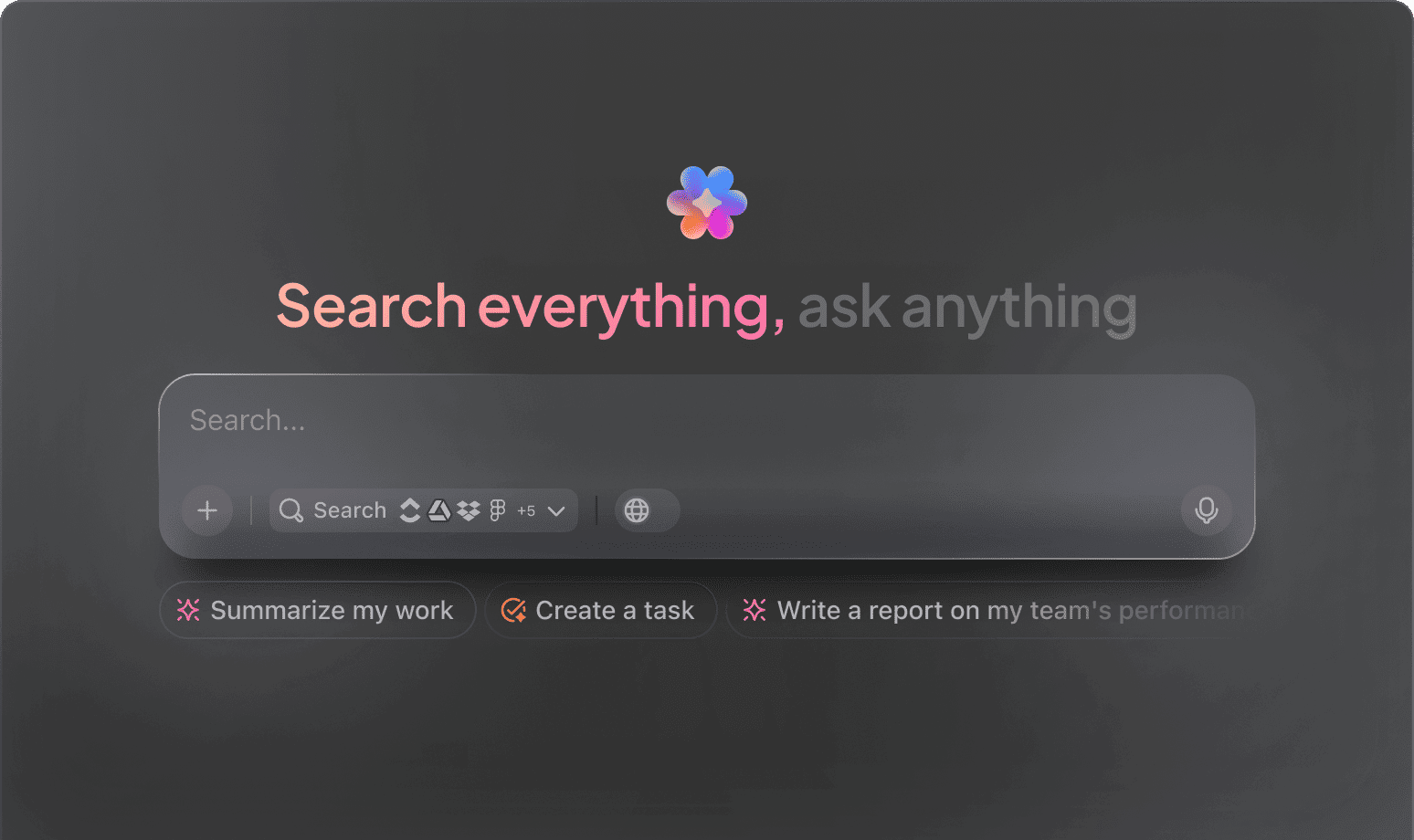AI Resource Management
Top AI Prompts for Resource Management
Optimize your resource allocation, simplify planning, and elevate your team's efficiency with ClickUp AI.
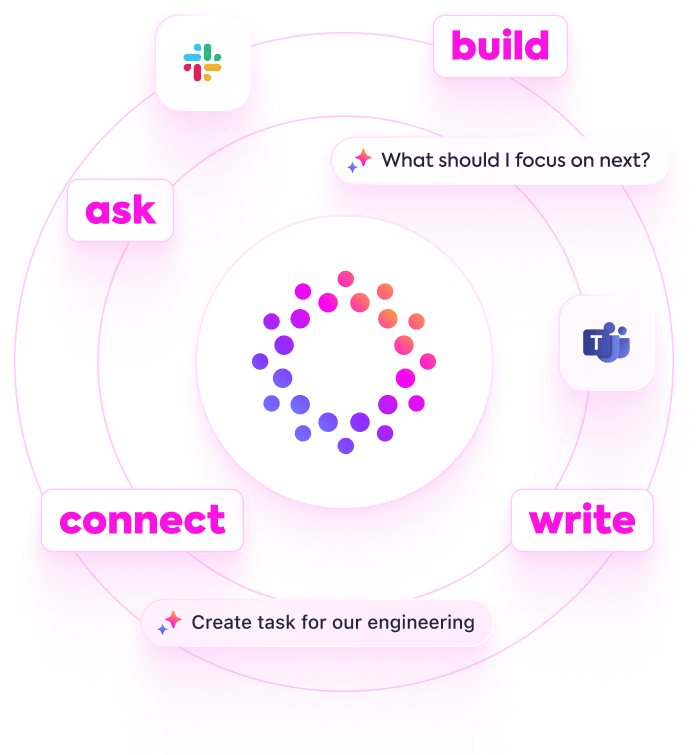
Trusted by the world’s leading businesses
AI Empowering Resource Management
Unlocking Efficiency in Resource Management with AI Prompts
Managing resources effectively requires more than just tracking assets—it demands coordination, foresight, and adaptability.
From allocating budgets to scheduling personnel and monitoring equipment, resource management encompasses numerous variables and tight timelines. AI prompts are stepping in to simplify these complexities.
Resource teams leverage AI to:
- Quickly identify resource availability and potential bottlenecks
- Generate allocation plans and usage forecasts with minimal effort
- Interpret policy guidelines and compliance requirements swiftly
- Transform scattered data into clear action plans, task lists, or project milestones
Integrated within familiar tools—such as documents, dashboards, and project trackers—AI goes beyond basic support. In solutions like ClickUp Brain, it operates seamlessly to convert resource data into structured, prioritized workflows.
ClickUp Brain Compared to Conventional Solutions
Why ClickUp Brain Excels in Resource Management
Designed to understand your workflow and context, ClickUp Brain lets you focus on managing resources instead of explaining them.
Conventional AI Platforms
- Constantly toggling between apps to collect information
- Repeating your resource allocation objectives with every query
- Receiving generic, irrelevant suggestions
- Hunting through multiple platforms to locate a single document
- Engaging with AI that lacks proactive insight
- Manually switching among different AI engines
- Merely a browser add-on without deep integration
ClickUp Brain
- Deeply integrated with your resource schedules, project plans, and team communications
- Retains your past interactions and resource goals
- Provides context-aware, practical guidance
- Offers consolidated search across all your resource data
- Supports hands-free commands through Talk to Text
- Automatically selects the optimal AI model: GPT, Claude, Gemini
- Available as a native Mac & Windows app optimized for performance
Prompts for Resource Management
15 Powerful AI Prompts for Resource Management (Tested in ClickUp Brain)
Optimize resource allocation—planning, tracking, and forecasting simplified.

Identify 5 resource allocation strategies for a mid-sized marketing team, based on the ‘Q3 Resource Plan’ document.
Use Case: Accelerates planning by leveraging historical resource distribution.
ClickUp Brain Behaviour: Analyzes linked documents to extract and suggest practical resource deployment methods.

What are the current trends in remote workforce utilization for tech startups under 100 employees?
Use Case: Guides resource managers in adapting to evolving workforce models.
ClickUp Brain Behaviour: Integrates insights from internal reports; Brain Max can supplement with relevant external data when available.

Draft a resource management plan focused on cross-functional team collaboration, referencing ‘Team Workflow Notes’ and past project summaries.
Use Case: Ensures alignment across departments with a unified resource strategy.
ClickUp Brain Behaviour: Extracts key points from linked files to generate a comprehensive, formatted plan.

Summarize resource utilization comparisons between Project Alpha and Project Beta using the ‘Resource Tracking Q2’ report.
Use Case: Facilitates quick evaluation of resource efficiency without manual data review.
ClickUp Brain Behaviour: Processes tabular and narrative data to provide a clear comparative summary.

List top software tools for resource scheduling in agile teams, referencing vendor evaluations and user feedback docs.
Use Case: Supports selection of effective tools to enhance scheduling accuracy.
ClickUp Brain Behavior: Scans internal documents to identify frequently recommended software and their noted benefits.

From the ‘Resource Risk Assessment’ document, generate a checklist for identifying potential bottlenecks in project staffing.
Use Case: Simplifies risk evaluation with a ready-to-use assessment list.
ClickUp Brain Behavior: Extracts risk factors and formats them into an actionable checklist within tasks or documents.

Summarize 3 emerging practices in resource allocation automation from recent industry reports and internal tech reviews.
Use Case: Keeps resource managers informed on automation trends to improve efficiency.
ClickUp Brain Behavior: Identifies recurring themes and innovations from linked research and notes.

From the ‘Employee Feedback Q1’ survey, summarize key preferences regarding workload distribution and resource support.
Use Case: Helps HR and management tailor resource policies to employee needs.
ClickUp Brain Behavior: Analyzes survey data to highlight common feedback and suggestions.

Write clear and motivating communication copy for resource allocation updates, using the tone guidelines in ‘CompanyVoice.pdf.’
Use Case: Speeds up crafting consistent internal messages about resource changes.
ClickUp Brain Behavior: References tone documents to propose varied, on-brand messaging options.

Summarize key regulatory changes affecting resource compliance in the EU for 2025 and their impact on staffing policies.
Use Case: Ensures resource management aligns with evolving legal requirements.
ClickUp Brain Behavior: Condenses linked compliance documents; Brain Max can add updates if public files are included.

Generate guidelines for resource allocation reporting formats, referencing internal audit standards and regional compliance documents.
Use Case: Standardizes reporting to meet internal and external expectations.
ClickUp Brain Behavior: Extracts formatting rules and compliance notes to create a structured reporting checklist.

Create a resource contingency checklist based on ‘Project Continuity Plans’ and recent risk assessments.
Use Case: Prepares teams to respond effectively to unexpected resource shortages.
ClickUp Brain Behavior: Identifies critical contingency steps and organizes them into actionable tasks.

Compare resource allocation efficiency metrics across departments using our internal performance dashboards.
Use Case: Supports data-driven decisions to optimize resource distribution.
ClickUp Brain Behavior: Summarizes key performance indicators into an easy-to-understand format.

What are the latest trends in sustainable resource management practices since 2023?
Use Case: Guides teams in adopting eco-friendly resource strategies.
ClickUp Brain Behavior: Synthesizes insights from research notes, sustainability reports, and industry updates.

Summarize common resource allocation challenges reported in the Asia-Pacific region from recent project feedback.
Use Case: Drives targeted improvements based on regional team experiences.
ClickUp Brain Behavior: Extracts and prioritizes issues from surveys, feedback forms, and support tickets.
Optimize Resource Planning Effortlessly with ClickUp Brain
Cut down on resource conflicts, unify your team’s efforts, and unlock smarter allocation through AI-driven processes.





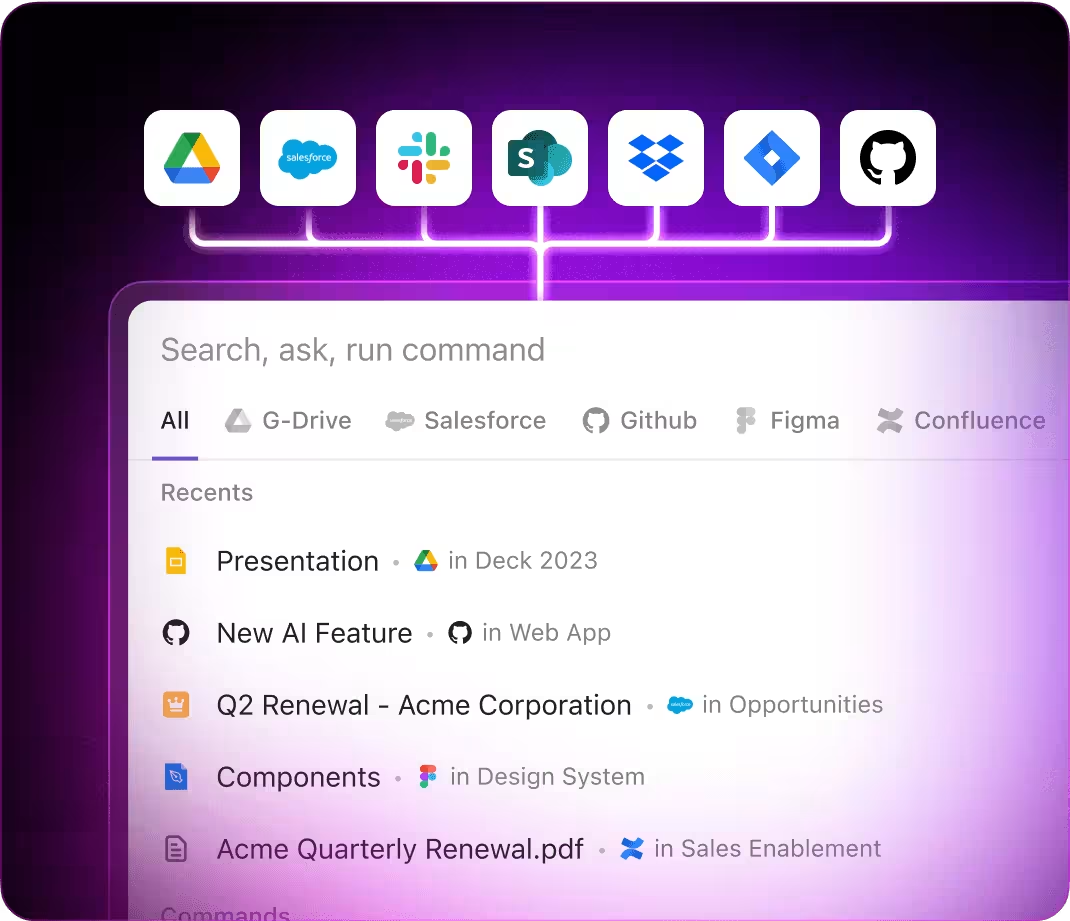
AI Applications
Key Ways AI Prompts Enhance Resource Management with ClickUp Brain
Boost allocation efficiency, reduce bottlenecks, and discover smarter resource strategies through AI-driven prompts
From Ideas to Resource Plans
Resource planning usually starts with fragmented lists and unclear allocations. ClickUp Brain organizes these into clear, actionable resource plans—right inside ClickUp Docs.
Leverage ClickUp Brain to:
- Convert scattered resource notes into structured planning templates
- Produce fresh allocation strategies informed by previous project data (using context-sensitive AI writing)
- With Brain Max, instantly explore historical resource usage, team feedback, and asset records to inform your upcoming projects.
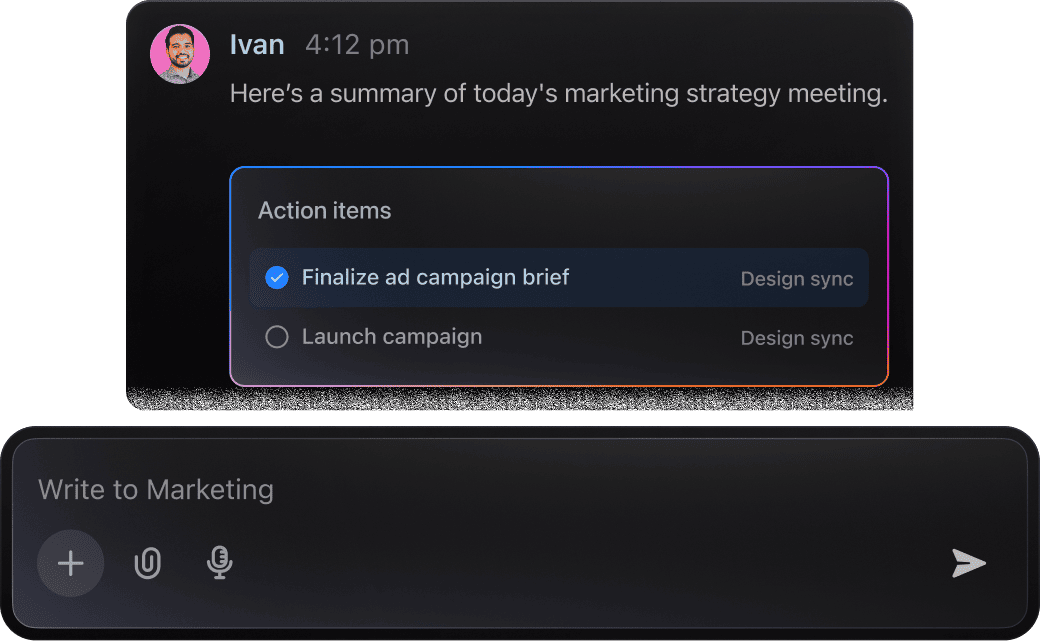
From Concept to Construction
Engineering teams juggle complex specifications and detailed feedback. ClickUp Brain simplifies this by pulling out key tasks, highlighting risks, and creating next-step plans from your documentation.
Leverage ClickUp Brain to:
- Condense intricate project dialogues found in tasks or Docs
- Convert detailed design feedback into actionable engineering assignments
- Automatically compose defect logs or project handover briefs
- With Brain Max, instantly retrieve past design choices, component analyses, or collaboration threads throughout your workspace—eliminating tedious searches through technical files.
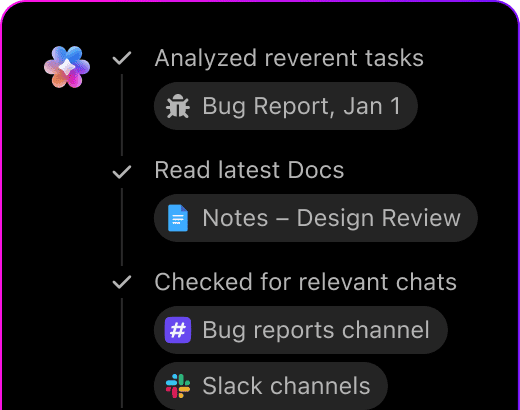
Resource Management with ClickUp Brain
Managing resources effectively demands balancing availability, allocation, and shifting priorities. ClickUp Brain simplifies this complexity—extracting key data and crafting clear communication that aligns with your team's style.
Leverage ClickUp Brain to:
- Analyze meeting notes and resource requests for clear action points
- Produce status updates and allocation summaries tailored to your team's voice
- Convert feedback and change requests into prioritized resource tasks
- Brain Max enhances this by linking past resource plans and project timelines, supporting informed decisions throughout extended projects.
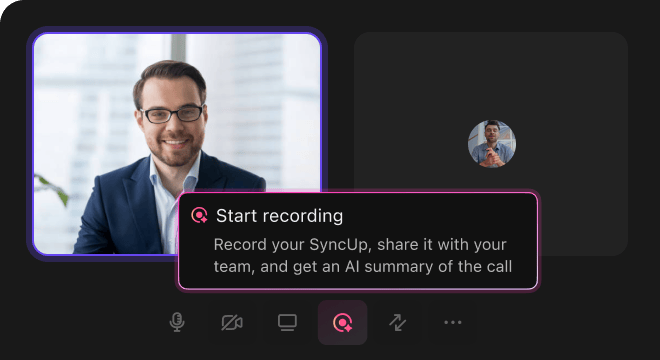
AI Advantages
How AI Prompts Revolutionize Resource Management with ClickUp Brain
Harness AI-driven prompts to optimize every phase of resource planning:
- Accelerate allocation: Shift swiftly from resource requests to assignments and schedules
- Minimize bottlenecks: Detect conflicts by analyzing workload and availability data
- Align your team: AI-crafted summaries and updates keep everyone informed and coordinated
- Make informed choices: Generate insights on capacity, costs, and compliance effortlessly
- Plan proactively: Discover opportunities to balance workloads and maximize utilization.
All these capabilities integrate directly within ClickUp, turning AI-generated content into actionable tasks, reports, and dashboards that drive your resource strategies forward.
Prompt Guidelines
Crafting Effective Prompts for Resource Management
Clear prompts unlock smarter resource planning.

Clarify the resource management scenario
Vague prompts yield broad suggestions. Specify details like resource type (e.g., “human capital” or “equipment”), project scope (e.g., “software rollout” or “construction phase”), or team size (e.g., “small agile team” or “cross-functional department”).
Example: “Propose staffing allocation strategies for a remote marketing team launching a new product.”

Use comparative prompts to evaluate options
AI excels at distinguishing between alternatives. Use prompts like “compare X and Y” to assess resource allocation methods, tool efficiencies, or scheduling approaches.
Example: “Compare benefits of using Gantt charts versus Kanban boards for managing software development resources.”

Define prompts as specific resource challenges
Frame your prompt around the problem you want to solve. Instead of “Suggest resource plans,” focus on outcomes:
Example: “Develop a resource schedule for a six-month project that minimizes downtime and balances workload evenly.”

Specify desired output formats
Need a resource checklist, allocation table, or timeline overview? Indicate the format clearly. AI delivers better results when output expectations are set.
Example: “Provide a prioritized list of equipment needs for a construction site with justifications in bullet points.”
Optimize Resource Planning with ClickUp Brain
ClickUp Brain goes beyond simple task tracking—it's your strategic partner in managing resources efficiently throughout every phase of your projects.





